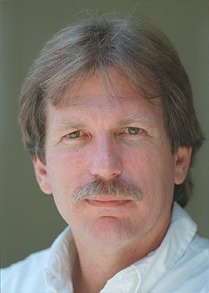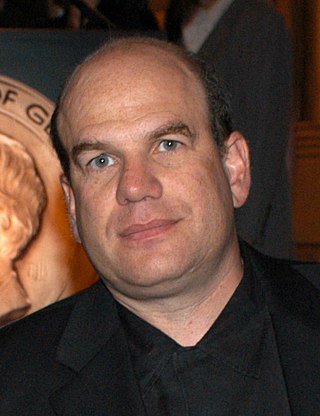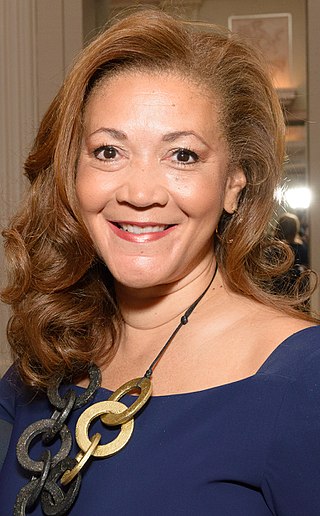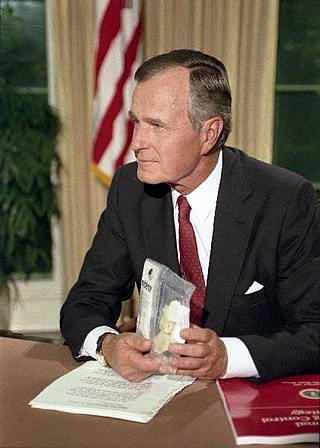Related Research Articles

Melvin Lindsey was an American radio and television personality in the Washington, D.C. area. He is widely known for originating the "Quiet Storm" late-night music programming format.

Gary Stephen Webb was an American investigative journalist.

The Wire is an American crime drama television series created and primarily written by author and former police reporter David Simon. The series was broadcast by the cable network HBO in the United States. The Wire premiered on June 2, 2002, and ended on March 9, 2008, comprising 60 episodes over five seasons. The idea for the show started out as a police drama loosely based on the experiences of his writing partner Ed Burns, a former homicide detective and public school teacher.

The Metropolitan Police Department of the District of Columbia (MPDC), more commonly known as the Metropolitan Police Department (MPD), the DC Police, and, colloquially, the DCPD, is the primary law enforcement agency for the District of Columbia, in the United States. With approximately 3,400 officers and 600 civilian staff, it is the sixth-largest municipal police department in the United States. The department serves an area of 68 square miles (180 km2) and a population of over 700,000 people. Established on August 6, 1861, the MPD is one of the oldest police departments in the United States. The MPD headquarters is at the Henry J. Daly Building, located on Indiana Avenue in Judiciary Square across the street from the District of Columbia Court of Appeals and the Superior Court of the District of Columbia. The department's mission is to "safeguard the District of Columbia and protect its residents and visitors with the highest regard for the sanctity of human life". The MPD's regulations are compiled in title 5, chapter 1 of the District of Columbia Code.

David Judah Simon is an American author, journalist, screenwriter, and producer best known for his work on The Wire (2002–08).

14th Street NW/SW is a street in Northwest and Southwest quadrants of Washington, D.C., located 1.25 miles (2.01 km) west of the U.S. Capitol. It runs from the 14th Street Bridge north to Eastern Avenue.
Crime in Washington, D.C., is directly related to the city's demographics, geography, and unique criminal justice system. The District's population reached a peak of 802,178 in 1950. Shortly after that, the city began losing residents, and by 1980 Washington had lost one-quarter of its population. The population loss to the suburbs also created a new demographic pattern, which divided affluent neighborhoods west of Rock Creek Park from the less well-off neighborhoods to the east.

Barney Circle is a small residential neighborhood located between the west bank of the Anacostia River and the eastern edge of Capitol Hill in southeast Washington, D.C., in the United States. The neighborhood is characterized by its sense of community, activism, walkability, and historic feel. The neighborhood's name derives from the eponymous former traffic circle Pennsylvania Avenue SE just before it crosses the John Philip Sousa Bridge over the Anacostia. The traffic circle is named for Commodore Joshua Barney, Commander of the Chesapeake Bay Flotilla in the War of 1812.

A number of writers have alleged that the United States Central Intelligence Agency (CIA) was involved in the Nicaraguan Contras' cocaine trafficking operations during the 1980s Nicaraguan civil war. These claims have led to investigations by the United States government, including hearings and reports by the United States House of Representatives, Senate, Department of Justice, and the CIA's Office of the Inspector General which ultimately concluded the allegations were unsupported. The subject remains controversial.

Michele L. Norris is an American journalist. Since 2019, Norris has worked as an opinion columnist with The Washington Post. She's best known for co-hosting NPR's evening news program All Things Considered from 2002-2011. She was the first African-American female host for NPR. Before that Norris was a correspondent for ABC News, as well as the Chicago Tribune and the Los Angeles Times. Norris is also a member of the Peabody Awards board of directors, which is presented by the University of Georgia's Henry W. Grady College of Journalism and Mass Communication.

The crack epidemic was a surge of crack cocaine use in major cities across the United States throughout the entirety of the 1980s and the early 1990s. This resulted in a number of social consequences, such as increasing crime and violence in American inner city neighborhoods, a resulting backlash in the form of tough on crime policies, and a massive spike in incarceration rates.

Jean de Segonzac is an American director, screenwriter and cinematographer who has worked in documentaries and television programs. Most of his work has been in gritty, cinéma vérité-style law enforcement TV dramas.

Marshall Heights is a residential neighborhood in Southeast Washington, D.C. It is bounded by East Capitol Street, Central Avenue SE, Southern Avenue, Fitch Street SE, and Benning Road SE. It was an undeveloped rural area occupied by extensive African American shanty towns, but the neighborhood received nationwide attention after a visit by First Lady Eleanor Roosevelt in 1934, which led to extensive infrastructure improvements and development for the first time. In the 1950s, Marshall Heights residents defeated national legislation designed to raze and redevelop the neighborhood. Queen Elizabeth II of the United Kingdom visited the area in 1991, at a time when Marshall Heights was in the throes of a violent crack cocaine epidemic. Limited redevelopment has occurred in the neighborhood, which was the site of two notorious child murders in 1973.

Michael Angelo Jackson is a member of the Maryland Senate representing District 27 in Calvert, Charles and Prince George's counties. Jackson was a member of the Maryland House of Delegates representing District 27B in Calvert and Prince George's counties from January 2015 to January 2021. Jackson is also the former Sheriff of Prince George's County, Maryland.

Georgetown Bagelry is a bagel bakery in the Washington, D.C. area, founded in 1981. Its first location was on M street downtown, and it is now located in Bethesda, Maryland. For several years, it was voted by the Washington City Paper as having the best bagels in the area. The company specializes in New York-style bagels which are made by boiling dough.

The Prince George's County Sheriff's Office (PGSO), officially the Office of the Sheriff, Prince George's County, provides law enforcement services in Prince George's County, Maryland in the United States. Its headquarters are located in Upper Marlboro, near the Depot Pond. The sheriff is the chief law enforcement officer of Prince George's County and is elected every four years. There are no term limits for the sheriff.

The Chief of the Metropolitan Police Department of the District of Columbia, generally simply referred to as the Chief of Police, is the head of the Metropolitan Police Department of Washington, D.C. The current acting Chief of Police is Pamela A. Smith, who succeeded interim chief, Ashan Benedict.
Scott Higham is a Pulitzer Prize-winning member of The Washington Post's investigations unit. He graduated from Stony Brook University, with a B.A. in history and has a M.S. from the Columbia Graduate School of Journalism. Higham also earned an A.S. in criminal justice at Suffolk County Community College.

Audi Field is a soccer-specific stadium in Buzzard Point in Washington, D.C. It is the home stadium for both of Washington, D.C.’s professional soccer teams, D.C. United in Major League Soccer and Washington Spirit in the National Women’s Soccer League, as well as housing the DC Defenders of the XFL. The stadium seats 20,000 people.

Glenn Frederick Ivey is an American politician and attorney serving as the U.S. representative for Maryland's 4th congressional district since 2023. A partner at the law firm of Ivey & Levetown, he served as the state's attorney for Prince George's County, Maryland, from 2002 to 2011. Ivey won the 2022 Democratic primary for the 4th congressional district over Donna Edwards, who previously represented the district for four terms, and then defeated the Republican nominee. According to the Cook Partisan Voting Index, his district is tied with California's 12th for the most Democratic in the country, with an index rating of D+40.
References
- ↑ Daniel Stashower (July 3, 2014). "Book review: 'S Street Rising: Crack, Murder, and Redemption in D.C.' by Ruben Castaneda". Washington Post . Retrieved July 20, 2014.
- ↑ Bethanne Patrick (July 11, 2014). "Review: "S Street Rising: Crack, Murder, and Redemption in DC" by Ruben Castaneda". Washington Times . Retrieved July 20, 2014.
- ↑ Staff writer (July 3, 2014). "Addiction Battled Ambition For Reporter Caught In D.C.'s Crack Epidemic". National Public Radio . Retrieved July 20, 2014.
- ↑ Jerry Stahl (June–August 2014). "High and Low". Bookforum . Retrieved July 20, 2014.
- ↑ "Ruben Castaneda". Baltimore Post Examiner. Retrieved July 20, 2014.
- 1 2 3 4 Ruben Castaneda. "About Ruben". Ruben Castaneda website. Archived from the original on 2014-07-26.
- ↑ "2007 Front Page, Guild Service Awards". Washington-Baltimore Newspaper Guild. 2007. Archived from the original on May 12, 2008.